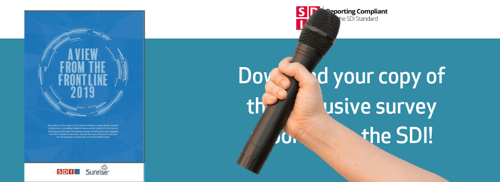The SDI ran a one day workshop recently on the topic of ‘future-proofing’ the service desk. It’s a wide-ranging subject but an important one in developing successful long-term business services. Here are some of the ideas we heard.
Service Desk tips for the Future
The over-arching theme of the day was that the service desk is evolving on both a human and customer level, and it pays to research and learn from consumer adoption and experiences of other familiar technology. London Business School’s support team drew the parallel between customers oft-expressed frustration of most supermarkets’ self-service strategy – and the increasing priority for service desk teams to herd their customer ‘cats’ towards self-service portals. Wolseley plc’s Support Operations manager talked about the focus on the customer service experience (CX) replacing traditional service desk measures of good performance – like first time fix rate. They also spoke about the importance of being proactive – finding weakness before your supported users or customers do – and not being afraid to fail. The service desk is undoubtedly a braver world for being customer-led, and an even better one if you’re not afraid to embrace change to achieve higher performance. Before the event, the Sunrise team had a discussion on the ‘future proof’ topic, and here’s what we came up with.
1) Make a good start! A good initial ITSM software implementation sets the future path. If you’re tempted to take an offer of ‘free’ implementation or to cut the scope of supplier services that you are prepared to fund then you really need to check what that gives you compared to your supplier’s recommendation. No supplier is interested in delivering a poor implementation and most know well what is required to match client expectations and requirements in terms of a chargeable implementation project. You’ve researched and chosen your next software solution for a reason, you don’t want to cut yourself off from good results before you give it a chance.
2) If you have an on-premise installation, don’t get marooned on old versions. Tempting as it is to skip upgrades, whether minor or major, for the short immediate inconvenience they may cause, keeping up means you’ll have the latest features and fixes. Not to mention being better prepared for more major opportunities that night arise in the future. Of course, if you’ve chosen SaaS, your ITSM tool vendor will keep you on the latest available version – which will be the best performing, safest and most secure. Most organisations that feel the need to find budget to replace their existing systems have allowed themselves to fall well behind their supplier’s latest versions.
3) Ensure software is extendable to your future needs – your service desk partner should demonstrate a history of feature development which is in hand with your and your customers’ evolving needs. Growth is one factor, as is diversity of the organisational structure. If your core software platform can support shared services and turn its hand to non-IT departments like HR or Operations & Facilities too, then your supplier has an eye on the future that will support most requirements.
4) Support flexible working practices. The service desk primarily exists to support people and as working practices evolve, make sure that your software can support the changing needs of the workplace. Remote working is a given these days, as is mobile support. Whether within the office or on remote sites, the team has to be up to the minute on service requests and resolutions.
5) Seek Continuous Improvement. Easily said, but how are you measuring your progress on this journey? The Service Desk Institute’s certification process supports, measures and audits the continuous improvement journey and some software vendors (Sunrise does) have SDI approved reporting capabilities that provide many of the requisite proof statements for you. There is always a next step that will improve your offering.
6) Be open to the future. Looking back, the service desk has come a long way from ‘switch it off and switch it on again’ – now it’s all about the customer experience, so let’s keep looking forward.




.png)
